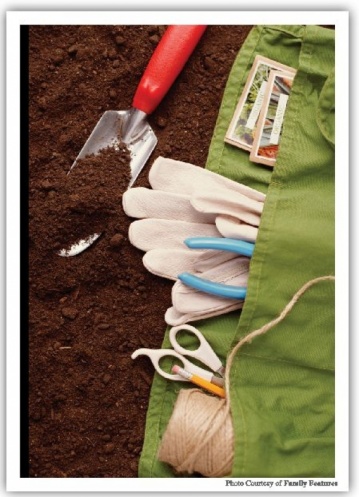
Spring in the garden is a dangerous time. The temptation is to go out on those warm, sunny days and plant ´til you drop. Not only is that strenuous on your body and mind, it can also lead to the proverbial glut of food in a few months.
A better solution is to plan out your annual edible garden so crops mature in a more orderly fashion. Succession planting requires a little knowledge of the type of plants you´re growing, a little planning to have room for them to grow, and the patience to plant each crop in turn. Also, other gardening techniques, such as crop rotation and interplanting, can help maximize growing space and help your plants avoid many soil-borne diseases and insects.
Planting for Success
Succession planting is a simple concept: Plant small rows or beds of plants periodically during the growing season. As one planting´s harvest begins to fade, the next planting´s harvest will be ready. The key is knowing what vegetables can be planted in succession, and the best time of year to do it.
To succession plant, start in spring with coolseason crops that can be planted early, such as lettuce, spinach, peas, broccoli, greens, pak choi, carrots, radishes, and beets. For example, instead of planting one long row or bed of lettuce, consider planting a short, 2-foot-long row or bed. Two weeks later, sow another 2-foot-long row, and so on until the weather gets too warm for lettuce. Since the plants mature in one to two months you´ll get a continuous harvest of lettuce.
For warm weather crops, such as bush beans, summer squash, or cucumbers, follow the same planting pattern. Plant one bed after the last frost date, and another three or four weeks later. Since these crops take at least 60 days to mature, in regions with short growing seasons you may have time for just two successive crops before the weather gets too cold.
As late summer weather cools, you can start planting lettuce again for a fall or winter crop, depending on your location. Because the amount of daylight decreases in autumn, plants grow more slowly in fall than in spring, so allow more time for them to mature.
The other key to succession planting is leaving room to plant. The temptation is to plant everything all at once and fill the garden. It´s important to plan for subsequent plantings. Cover unused beds with straw or other mulch to deter weeds.
Pull out old crops as soon as they finish producing. Don´t let those peas hang on just because there are a few fruits on the vine. Pull old lettuce and spinach plants as soon as they show signs of bolting. By being a little hardhearted, you´ll create lots of room to grow a second and third crop. It takes a little planning in advance, but you´ll be amazed at where you can tuck in a few broccoli or pak choi plants or a small row of beans.






















